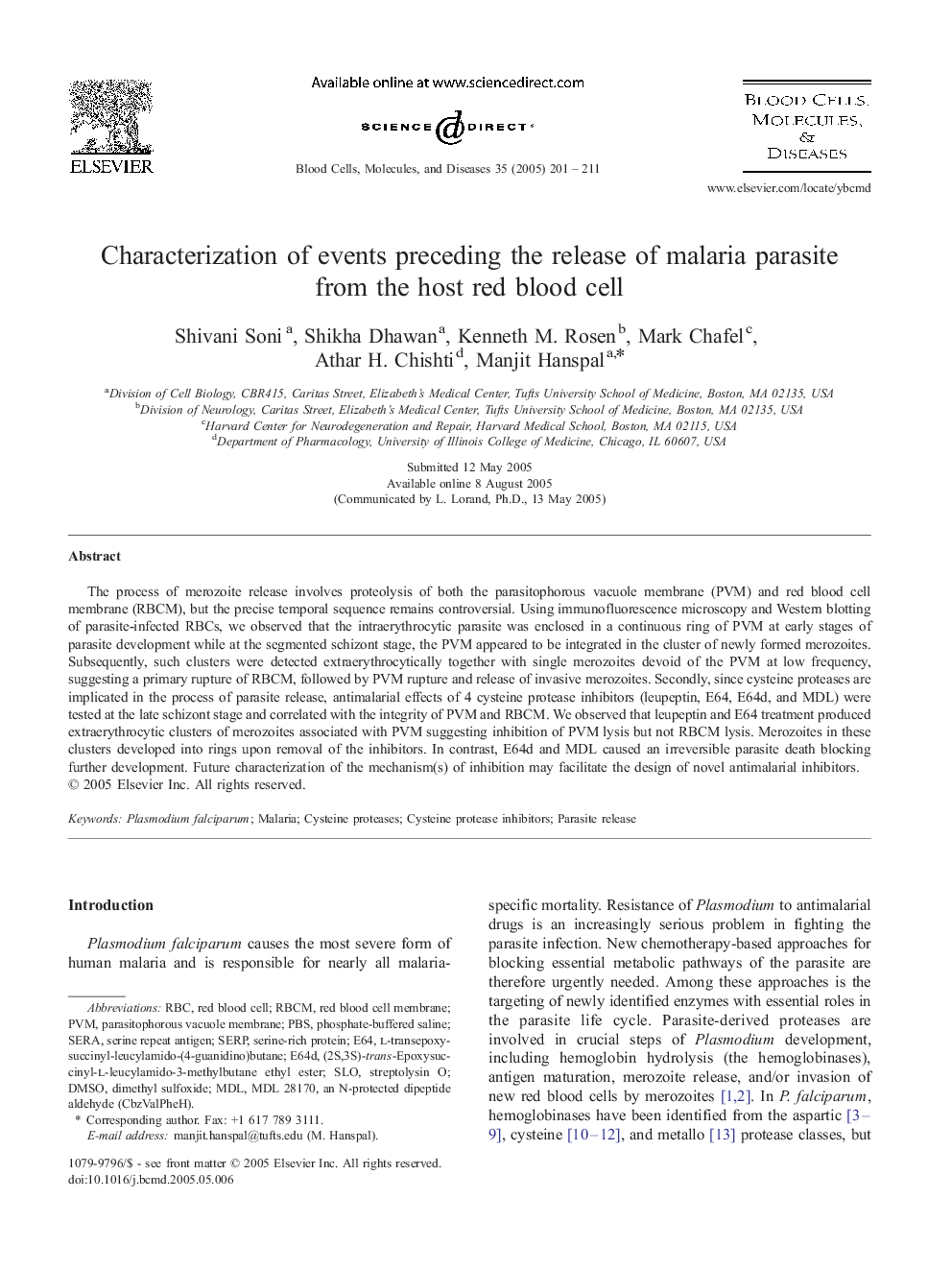| Article ID | Journal | Published Year | Pages | File Type |
|---|---|---|---|---|
| 9137574 | Blood Cells, Molecules, and Diseases | 2005 | 11 Pages |
Abstract
The process of merozoite release involves proteolysis of both the parasitophorous vacuole membrane (PVM) and red blood cell membrane (RBCM), but the precise temporal sequence remains controversial. Using immunofluorescence microscopy and Western blotting of parasite-infected RBCs, we observed that the intraerythrocytic parasite was enclosed in a continuous ring of PVM at early stages of parasite development while at the segmented schizont stage, the PVM appeared to be integrated in the cluster of newly formed merozoites. Subsequently, such clusters were detected extraerythrocytically together with single merozoites devoid of the PVM at low frequency, suggesting a primary rupture of RBCM, followed by PVM rupture and release of invasive merozoites. Secondly, since cysteine proteases are implicated in the process of parasite release, antimalarial effects of 4 cysteine protease inhibitors (leupeptin, E64, E64d, and MDL) were tested at the late schizont stage and correlated with the integrity of PVM and RBCM. We observed that leupeptin and E64 treatment produced extraerythrocytic clusters of merozoites associated with PVM suggesting inhibition of PVM lysis but not RBCM lysis. Merozoites in these clusters developed into rings upon removal of the inhibitors. In contrast, E64d and MDL caused an irreversible parasite death blocking further development. Future characterization of the mechanism(s) of inhibition may facilitate the design of novel antimalarial inhibitors.
Keywords
E64dPBSSERP(2S,3S)-trans-Epoxysuccinyl-l-leucylamido-3-methylbutane ethyl esterRBCE64MDLDMSOSeraStreptolysin OsloPVMDimethyl sulfoxideSerine repeat antigenRed blood cell membraneParasitophorous vacuole membraneMalariaPhosphate-buffered salineCysteine protease inhibitorsCysteine proteasesPlasmodium falciparumred blood cell
Related Topics
Life Sciences
Biochemistry, Genetics and Molecular Biology
Molecular Biology
Authors
Shivani Soni, Shikha Dhawan, Kenneth M. Rosen, Mark Chafel, Athar H. Chishti, Manjit Hanspal,
